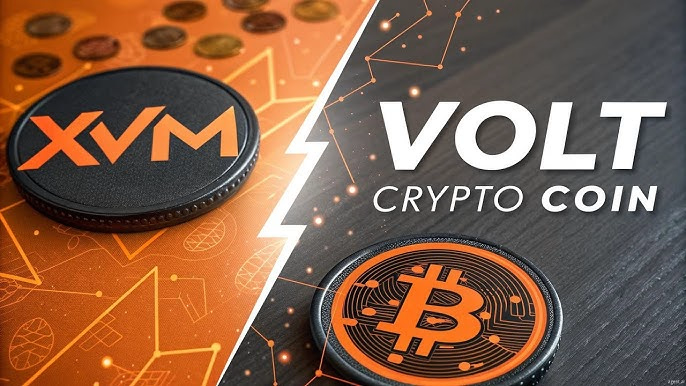What Is Proof of Stake in Crypto? A Beginner's Guide
Cryptocurrency is evolving quickly, and one of the most significant changes is the rise of Proof of Stake (PoS). This system is reshaping how blockchains maintain security, lowering energy costs, and making participation accessible to more people. With Ethereum's move to Proof of Stake, it's clear that this approach is not just a trend but a foundation for the future of crypto.
At its core, Proof of Stake is straightforward. Instead of miners competing with expensive machines to solve puzzles, coin holders lock or "stake" their coins in the network. In return, they help secure the blockchain and earn rewards. This design creates a greener, faster, and more rewarding system for participants.
This article explains what Proof of Stake is, how it works, its advantages, risks, and how you can participate. Everything is written in plain language, so even beginners can follow along. By the end, you'll understand why Proof of Stake is becoming the standard for modern blockchains.
What Is Proof of Stake in Cryptocurrency?
Proof of Stake secures blockchains without needing huge amounts of computing power. In traditional Proof of Work systems like Bitcoin, miners compete to solve complex math problems, and the winner adds a new block of transactions. It requires powerful machines, high electricity use, and massive costs.
Proof of Stake changes the process. Instead of miners, it uses validators. Validators are chosen based on the number of coins they have staked, or locked, in the network. The more coins staked, the higher the chance of being selected to validate transactions and add a block.
Think of it like a lottery. Each staked coin is a ticket. The more tickets you have, the greater your chances of being picked. Once chosen, you confirm transactions and earn rewards in the form of new coins.
This system makes blockchains more energy-efficient, fairer, and easier to join. It's a big reason why many new cryptocurrencies now use Proof of Stake.
How Proof of Stake Works Compared to Proof of Work
The simplest way to grasp Proof of Stake is by comparing it to Proof of Work.
In Proof of Work, miners around the world compete simultaneously. They run machines that consume enormous power, but only one miner wins each block. The rest of that energy is wasted.
Proof of Stake eliminates the waste. Validators are chosen randomly based on their stake, not by solving puzzles. Since no heavy machinery is needed, the energy use is far lower.
Security is maintained by requiring validators to put their coins at risk. If a validator tries to cheat, part of their staked coins are taken away. This "skin in the game" ensures honesty.
While some argue Proof of Work has more history behind it, Proof of Stake is quickly proving itself. With Ethereum, Cardano, and Solana using PoS, the method has become trusted and widely adopted.
The Benefits of Proof of Stake for Crypto Investors and Networks
Proof of Stake offers several benefits that make it attractive for investors and networks.
The biggest advantage is energy efficiency. PoS uses a fraction of the electricity compared to mining, making it more sustainable and friendly to the environment.
Another key benefit is staking rewards. When you stake coins, you earn passive income over time, much like interest in a savings account. Many investors see this as a way to grow their holdings without trading.
Transaction speed and costs also improve under Proof of Stake. With no mining competition slowing things down, blocks are created more quickly, and fees are often lower.
Finally, PoS lowers the entry barrier. You don't need expensive equipment to join. A simple wallet and supported coins are enough. Some exchanges even allow staking with a single click, making it accessible to almost anyone.
Risks and Criticisms of Proof of Stake
Proof of Stake is not without its drawbacks.
One concern is centralization. Since larger stakeholders have more chances of being selected, they can accumulate more rewards over time, giving them more influence over the network.
Another issue is slashing. Validators who fail to stay online or act dishonestly risk losing some of their staked coins. While this helps secure the system, it can also punish users who don't have reliable internet or hardware.
Liquidity can also be a challenge. Some networks lock staked coins for specific periods, which means you cannot sell your assets quickly if prices drop.
Lastly, some critics say Proof of Stake hasn't been tested as long as Proof of Work. However, with Ethereum and other large networks running on PoS, confidence in its long-term stability is growing.
Popular Cryptocurrencies That Use Proof of Stake Today
Many leading cryptocurrencies now use Proof of Stake or its variations.
Ethereum made global headlines in 2022 when it switched from Proof of Work to Proof of Stake in a milestone event called "The Merge." This reduced Ethereum's energy use by more than 99 percent.
Cardano was designed from the start as a Proof of Stake blockchain. It uses a protocol called Ouroboros, which is known for its scientific backing and security. Cardano allows simple staking directly from user wallets.
Solana combines Proof of Stake with another method called Proof of History, enabling it to process thousands of transactions per second. Other popular PoS projects include Polkadot, Tezos, Algorand, and Avalanche.
These examples prove that Proof of Stake can power everything from decentralized finance to NFTs and cross-chain technology.
How to Start Earning Through Proof of Stake Staking
Earning with Proof of Stake is more straightforward than many people think.
Start by picking a cryptocurrency that uses PoS, such as Ethereum, Cardano, or Solana. Then choose how to stake your coins. You can run your own validator or use a staking pool or exchange.
Running your own validator gives you control but usually requires a minimum amount of coins and technical knowledge. For example, Ethereum requires 32 ETH to become a validator.
Staking pools and exchanges offer easier options. Pools combine smaller stakes from many users to meet the minimum, while exchanges like Coinbase, Binance, or Kraken allow you to stake in just a few clicks.
Once staked, your coins earn rewards over time. Some blockchains pay daily, while others distribute weekly. Be sure to check if your coins are locked for a period or if you can withdraw them anytime.
Staking is a simple way to grow your holdings while helping keep the network safe.
Why Proof of Stake Matters for the Future of Blockchain
Proof of Stake is more than an energy-saving upgrade. It's a key factor in blockchain's growth and adoption.
By lowering power consumption, PoS makes cryptocurrency more sustainable. It is crucial as governments and users demand eco-friendly technologies. Faster speeds and lower fees also make blockchain more practical for payments, apps, and global adoption.
For investors, PoS offers steady rewards that encourage long-term holding. For developers, it provides a scalable foundation to build apps for millions of users. For regulators, it shows that cryptocurrency can move toward greener solutions.
With major blockchains adopting PoS and new projects choosing it by default, the future of crypto looks increasingly tied to Proof of Stake.
Conclusion
Proof of Stake has proven itself as a secure, efficient, and rewarding system. It allows networks to run on less energy, process transactions more quickly, and involve more people in keeping blockchains safe. Ethereum's move to PoS is a strong sign that this system is set to dominate the future of crypto.
Proof of Stake is more than a technical shift for investors and everyday users—it's an opportunity. It's a way to earn, participate, and be part of a more sustainable crypto world. Learning how staking works today could give you an edge as the technology grows.
Key Takeaways
- Proof of Stake secures blockchains by using staked coins instead of mining.
- It's far more energy-efficient than Proof of Work.
- Staking lets investors earn rewards, much like interest.
- Ethereum, Cardano, Solana, and Polkadot all use Proof of Stake.
- Risks include slashing, coin lock-up, and centralization.
- Staking is beginner-friendly through exchanges and pools.
- PoS is becoming the standard for modern blockchain growth.
Frequently Asked Questions (FAQs)
What is Proof of Stake in simple words?
It's a system where people lock their coins to secure a blockchain and earn rewards.
How is Proof of Stake different from Proof of Work?
Proof of Work relies on miners and machines, while Proof of Stake uses validators with staked coins.
Can I earn money with Proof of Stake?
Yes, you can earn staking rewards, similar to interest on savings accounts.
Is Proof of Stake safe?
Yes, validators risk losing their coins if they act dishonestly, which keeps the system fair.
Which cryptocurrencies use Proof of Stake?
Ethereum, Cardano, Solana, Tezos, Polkadot, and Avalanche are among the most popular.






